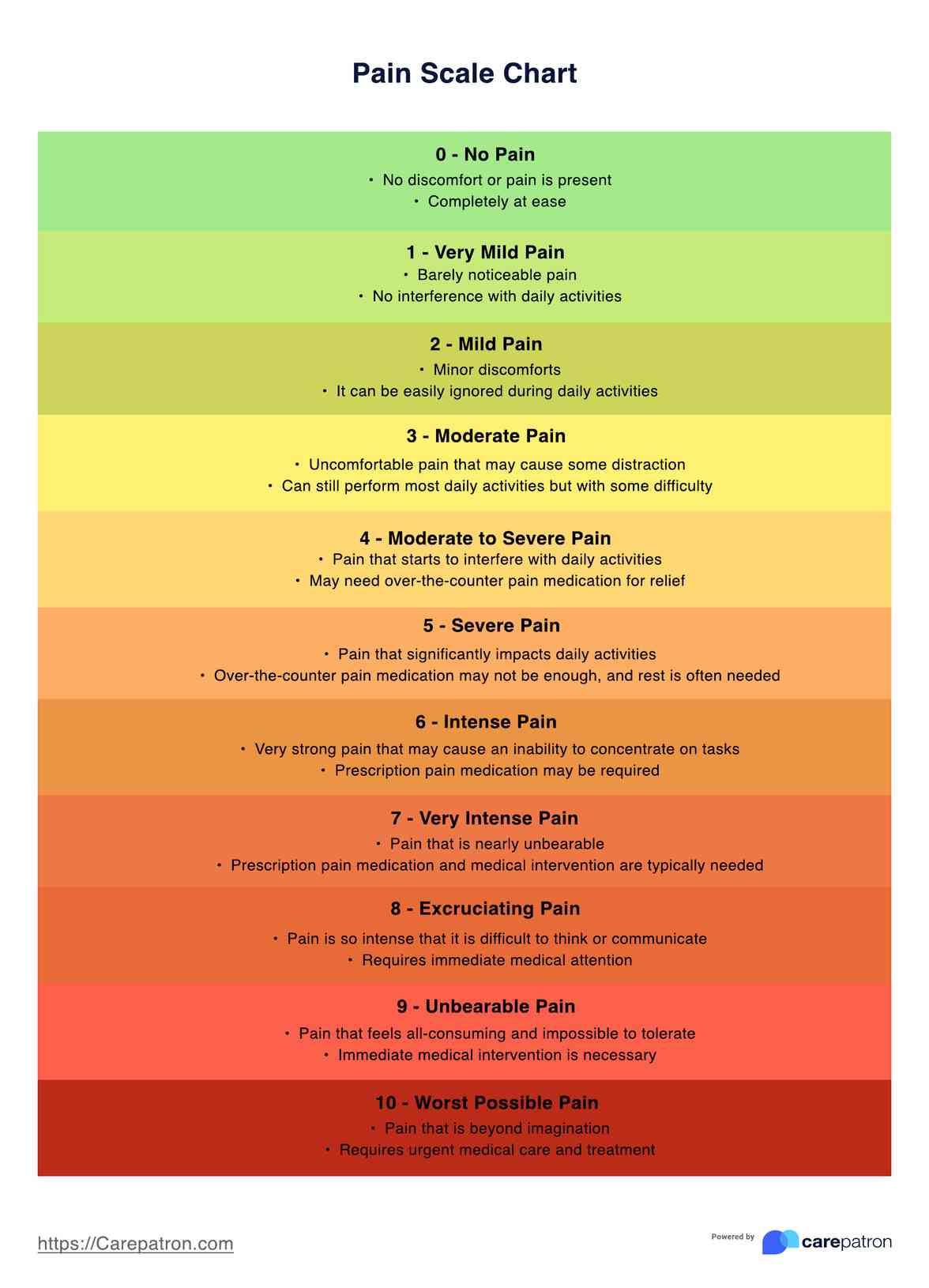
Use the Pain Level Chart to understand patients' experience of pain and its impact on their functioning and well-being.

By Audrey Liz Perez on Aug 06, 2024.


Pain is a complex and subjective experience. This makes it challenging to assess and manage effectively. When discussing pain, it's essential to understand that there are different types of pain that individuals can experience, from mild to extreme pain.
Recognizing the several types of pain is crucial for healthcare practitioners to provide appropriate assessment and management strategies.
Acute pain is a sudden and typically short-lived form of pain that is a warning signal for an underlying injury or illness. It can range from mild to severe and often results from trauma, surgery, or an acute medical condition. Acute pain resolves once the underlying cause is addressed or the body heals.
Unlike acute pain, chronic pain persists for an extended period, typically lasting over three to six months. It can be continuous or intermittent and may continue even after the initial injury or illness has healed. Chronic pain conditions can be challenging to manage and may involve various underlying mechanisms, such as inflammation, nerve damage, or changes in the central nervous system (Treede et al., 2015). A Chronic Pain Grade Scale can help assess chronic pain and its impact, especially among chronic pain patients.
Nociceptive pain is caused by activating specialized nerve endings called nociceptors in response to actual or potential tissue damage. This type of pain can be further classified into somatic or visceral pain. Somatic pain arises from injuries to bones, joints, muscles, or skin, while visceral pain originates from internal organs (Woolf & Ma, 2007).
Neuropathic pain results from damage or dysfunction within the somatosensory nervous system, which includes the peripheral and central nervous systems. This type of pain can involve various mechanisms, such as ectopic firing of damaged nerves, central sensitization, or abnormal processing of pain signals in the brain (Colloca et al., 2017).
Pain can also manifest through nonverbal cues, such as facial expressions, body postures, and vocalizations. These nonverbal indicators can be handy for assessing pain in individuals who have difficulty communicating verbally, such as infants, young children, or individuals with cognitive impairments. Healthcare professionals can use this Nonverbal Pain Scale to measure and document how much pain a patient experiences.